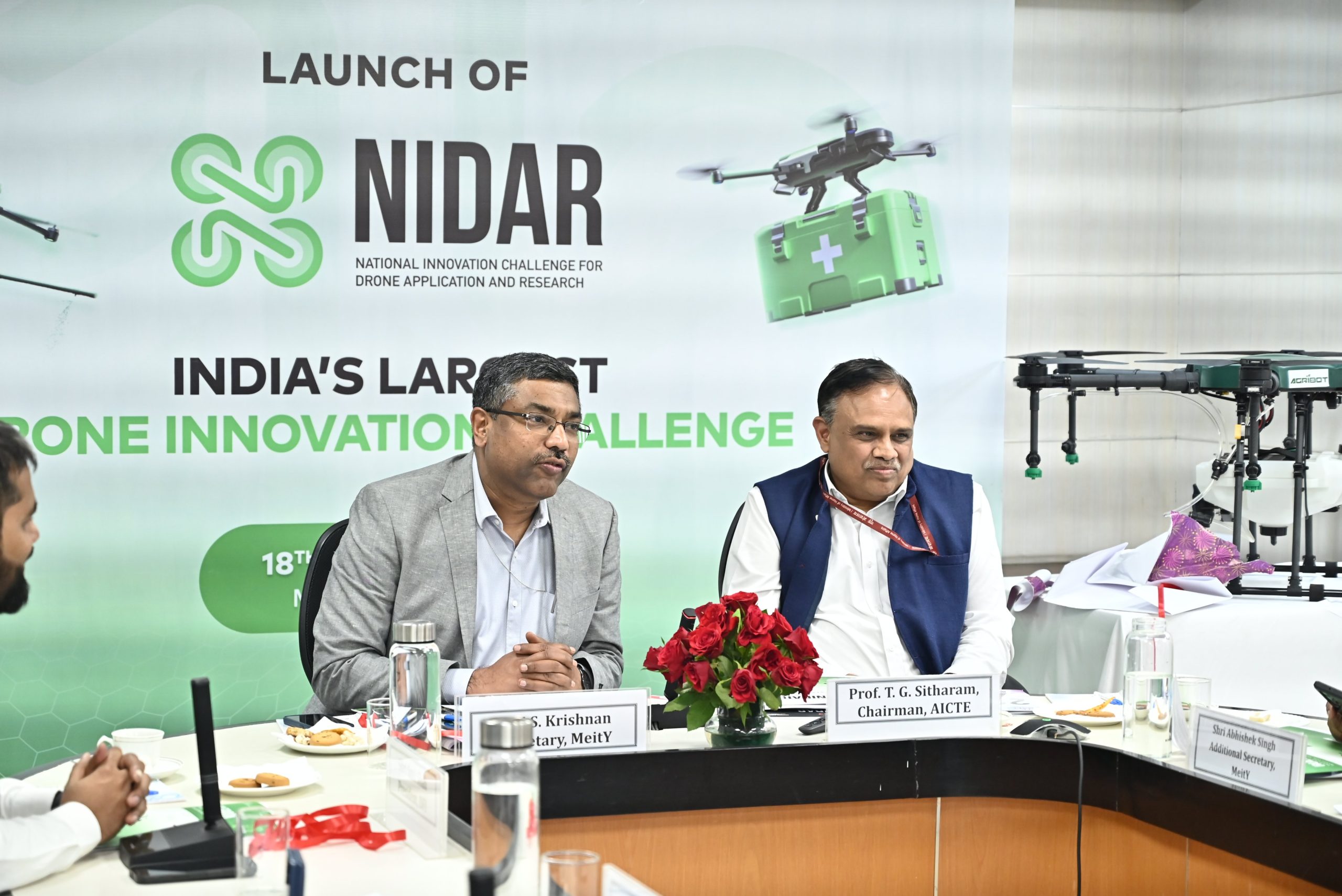- Courses
- GS Full Course 1 Year
- GS Full Course 2 Year
- GS Full Course 3 Year
- GS Full Course Till Selection
- CSAT
- 5 LAYERED ARJUNA Mentorship
- Public Administration Optional
- Online Program
- GS Recorded Course
- NCERT Batch
- Polity Module Course
- Geography Module Course
- Economy Module Course
- AMAC Module Course
- Modern India, Post Independence & World History Module Course
- Environment Module Course
- Governance Module Course
- Science & Tech. Module Course
- International Relations and Internal Security Module Course
- Disaster Management Module Course
- Ethics Module Course
- Essay Module Course
- Current Affairs Module Course
- ABOUT US
- OUR TOPPERS
- TEST SERIES
- FREE STUDY MATERIAL
- VIDEOS
- CONTACT US
Genetically-Engineered Non-Browning Bananas: A Breakthrough in Reducing Food Waste
Genetically-Engineered Non-Browning Bananas: A Breakthrough in Reducing Food Waste

- Brown, overripe bananas often go to waste despite being edible.
- Scientists have developed a genetically-engineered banana with a longer shelf life.
- Developed by Tropic, a UK-based biotech company.
Why Do Bananas Turn Brown?
- Bananas ripen due to the hormone ethylene.
- They produce ethylene even after being harvested.
- Ethylene triggers polyphenol oxidase (PPO), an enzyme that causes browning.
- Contact with oxygen breaks down yellow pigment into a brown hue.
- Bruising increases ethylene production, speeding up browning.
How Was the Non-Browning Banana Produced?
- Scientists disabled PPO production in bananas.
- Scientists disabled the polyphenol oxidase (PPO) gene in bananas using a technique called gene silencing.
- They used a method called RNA interference (RNAi), which is like a "mute button" for specific genes.
- This technique introduces small pieces of RNA that block the PPO gene from making its enzyme.
- This does not stop ripening but prevents browning.
- Similar technology was used in Arctic apples (approved in the US in 2017).
- Also tested in tomatoes, melons, kiwifruits, and mushrooms.
Features of the Non-Browning Banana
- Longer shelf life – remains fresh and yellow for 12 hours after peeling.
- Less browning from bumps and bruises during transport.
- Reduces food waste and enhances consumer appeal.
Why Does This Matter?
- Bananas are highly perishable – up to 50% of the crop is wasted annually.
- UK (2017 survey): 1.4 million edible bananas are discarded every day.
- Food waste is major contributor to greenhouse gas (GHG) emissions.
- Genetically-modified bananas can help reduce CO2 emissions.
Environmental & Economic Impact
- Less food waste means that there will be fewer emissions from landfills.
- Reduction in food waste from perishable banana is equivalent to removing 2 million passenger cars annually.
- Economic benefits: Lower waste, more efficient supply chains, and higher profits for farmers.
Food Waste Crisis in India
- India generates 78.2 million tonnes of food waste annually (Food Waste Index Report 2024).
- 55 kg of food waste per capita per year in households.
- This is enough to feed 377 million people.
- Preventing food waste can meet 26.5% of the annual staple food requirement (207.5 kg per capita).
- Food waste contributes 8-10% of global greenhouse gas (GHG) emissions.
- It contributes to methane emission , a highly potent greenhouse gas, accelerating climate change.
India’s Post-Harvest Losses
- India loses ₹1.5 lakh crore annually due to post-harvest inefficiencies.
- Data sourced from the Union Ministry of Food Processing Industries (MoFPI).
- Major causes: poor storage, transport, inefficient supply chains, and handling practices.
Breakdown of Losses (Sector-Wise)
- Cereals (Rice, Wheat, Maize): ₹26,000 crore
- Pulses & Oilseeds: ₹18,000 crore
- Fruits & Vegetables: ₹57,000 crore
- Onion Losses: ₹5,156 crore
- Tomato Losses: ₹5,921 crore
- Banana, Mango, Citrus Fruits Losses: ₹5,777 cr, ₹10,581 cr, ₹4,347 cr respectively
Post-Harvest Losses – Key Causes
- Storage Challenges: Lack of cold storage & warehouses
- Transport Issues: 5-10% loss during transportation (NABCONS study)
- Supply Chain Inefficiencies: Middlemen, lack of farm-to-market infrastructure
- Inadequate Processing Units: Low value addition and poor handling
Government Initiatives to Reduce Losses
1. Pradhan Mantri Kisan Sampada Yojana (PMKSY)
- Supports food processing, storage, and cold chains
- Development of mega food parks, agro-processing clusters
- 1,187 projects approved under this scheme
2. Agriculture Infrastructure Fund (AIF)
- Launched: July 2020 (Atmanirbhar Bharat Initiative) it provides financing for :-
- Cold storage facilities
- Warehouses
- Processing units
Solutions to Food Wastage
- Enhancing Storage and Cold Chain Infrastructure
- Expanding Cold Storage Facilities: Investment in modern cold storage units and refrigerated warehouses can extend the shelf life of perishable goods.
- Building Rural Warehouses: Farmers often lack proper storage, leading to spoilage before produce reaches the market.
- Government Support: Programs like Agriculture Infrastructure Fund (AIF) provide financial aid for setting up warehouses and processing units.
- Use of Zero-Energy Cooling Chambers (ZECC): These are low-cost, non-electric cooling solutions that can store fruits and vegetables for longer periods.
- Adopting AI & IoT-based Monitoring: Real-time tracking of temperature and humidity in storage facilities prevents spoilage.
2. Improving Food Supply Chain Efficiency
- A fragmented and inefficient supply chain results in significant losses before food even reaches consumers. The involvement of multiple intermediaries leads to delays, price hikes, and spoilage.
- Direct Farm-to-Market Linkages: Reducing the role of middlemen through digitized marketplaces (e.g., eNAM in India) ensures faster sales and reduces waste.
- Smart Logistics & Transport: Refrigerated trucks, AI-based route optimization, and blockchain tracking can help minimize transit losses.
- Better Handling Practices: Training farmers, retailers, and transport workers on proper food handling techniques to prevent damage.
- Supply Chain Digitization: Using real-time demand forecasting and smart distribution networks prevents overproduction and wastage.
3. Food Processing & Value Addition
- A large portion of food waste occurs due to an inability to utilize surplus produce effectively.
- Food Processing Units: Setting up agro-processing industries to convert perishable goods into value-added products (e.g., making banana chips, tomato puree, and mango pulp).
- Agro-Based Cooperatives: Encouraging farmer cooperatives to invest in food processing.
- Use of Surplus for Alternative Products: Excess grains and vegetables can be repurposed into biofuels, animal feed, or organic fertilizers.
4. Consumer Awareness & Behavioral Changes
Household food wastage is a major contributor to global waste. Often, consumers buy more than needed, misinterpret expiration dates, or discard edible food.
Better Understanding of Expiry Dates:
- Many people throw away food that is still edible due to confusion between “Best Before” and “Use By” labels.
- Best Before: Food is safe to eat after this date but may lose quality.
- Use By: Food should be consumed before this date for safety.
- Portion Control & Smart Purchasing: Encouraging consumers to buy only what they need and plan meals efficiently.
- Leftover Management & Composting: Households should learn to store and repurpose leftovers instead of discarding them.
- Educational Campaigns & Apps: Mobile apps like OLIO (food-sharing) and Too Good To Go help people share excess food instead of wasting it.
5. Reducing Waste in Restaurants, Supermarkets & Hotels
- The hospitality and retail sectors contribute significantly to food wastage through unsold goods, over-prepared meals, and strict aesthetic standards for fresh produce.
- Dynamic Pricing Models: Supermarkets can offer discounts on near-expiry food to encourage purchases before spoilage.
- Ugly But Edible Campaigns: Selling imperfect-looking fruits and vegetables that are otherwise thrown away despite being nutritious.
- Food Recovery & Redistribution: Restaurants and supermarkets can donate excess food to food banks and charities.
- Better Inventory Management: AI-driven predictive analytics can help supermarkets stock the right amount of food, reducing overstocking and wastage.
6. Strengthening Government Policies & Regulations
- Government intervention plays a crucial role in reducing food wastage through policies that promote sustainability and efficiency.
- Food Waste Reduction Laws: Countries like France and Italy have laws mandating supermarkets to donate unsold food instead of discarding it.
- Subsidies for Food Processing & Storage: Governments should incentivize farmers and businesses to invest in cold storage, warehouses, and food processing units.
- Food Waste Audits: Implementing regular food waste tracking in industries and public institutions to monitor and reduce waste.
7. Promoting Sustainable Agricultural Practices
- Food wastage starts at the production stage, where overuse of resources, poor harvest techniques, and unpredictable weather lead to loss.
- Precision Agriculture: Using AI, drones, and IoT-based sensors to optimize crop yields and minimize losses.
- Climate-Resilient Crops: Encouraging drought-resistant and genetically modified crops (such as the non-browning banana) to reduce losses from spoilage.
- Better Post-Harvest Management: Using protective packaging, improved harvesting methods, and controlled-atmosphere storage to extend shelf life.
8. Encouraging Community-Led Initiatives & Food Banks
- Communities play a vital role in reducing food waste through donation drives, shared meals, and grassroots-level awareness campaigns.
- Food Banks & Redistribution Networks: Organizations can collect excess food from hotels, restaurants, and retailers to distribute among the needy.
- Community Composting & Urban Farming: Encouraging households and communities to compost organic waste and use it for urban agriculture.
- School Programs on Food Waste: Teaching children about food sustainability and efficient consumption practices.
Technologies for food waste reduction
|
Scientific Method |
How It Works |
Impact on Food Waste Reduction |
|
Genetic Modification (GM) & CRISPR Gene Editing |
Modifies genes to improve shelf life, delay ripening, and prevent enzymatic browning (e.g., non-browning bananas, Arctic apples). |
Reduces waste by keeping food fresh longer, minimizing spoilage in storage and transit. |
|
Food Irradiation |
Uses ionizing radiation (gamma rays, X-rays, electron beams) to kill bacteria, fungi, and pests, extend shelf life, and delay ripening. |
Prevents spoilage, reduces foodborne pathogens, extends storage life, and minimizes post-harvest losses. |
|
Smart Packaging & Edible Coatings |
Uses antimicrobial and moisture-resistant packaging, including plant-based edible coatings to slow down spoilage. |
Prevents oxidation, dehydration, and microbial contamination, reducing food spoilage. |
|
Precision Agriculture & AI-Based Crop Monitoring |
Uses AI-driven satellite imaging, IoT sensors, and drones to optimize water, pesticide, and nutrient usage, reducing pre-harvest losses. |
Prevents overproduction and minimizes waste by improving yield forecasting and farm productivity. |
|
Cold Plasma Technology |
Non-thermal technology that inactivates microbes and delays food spoilage by disrupting their cell membranes. |
Reduces foodborne diseases, increases safety, and extends shelf life without chemical preservatives. |
|
Fermentation & Bio-Preservation |
Uses natural fermentation to extend food life (e.g., yogurt, kimchi) and antimicrobial peptides to prevent spoilage. |
Improves food longevity naturally and reduces the need for artificial preservatives. |
|
Nanotechnology in Food Preservation |
Applies nano-coatings with antimicrobial properties to increase food freshness and enhance packaging efficiency. |
Enhances food safety and reduces waste caused by microbial contamination and oxidation. |
|
Bioconversion of Food Waste |
Converts food waste into biofuels, fertilizers, and alternative protein sources through microbial and enzymatic processing. |
Turns waste into valuable by-products, reducing landfill waste and greenhouse gas emissions. |
Implementing scientific methods such as genetic modification, food irradiation, smart packaging, and AI-driven agriculture can significantly reduce food waste by extending shelf life, improving storage, and minimizing spoilage. By integrating these technologies into the food supply chain, we can enhance food security, reduce environmental impact, and build a more sustainable global food system.



